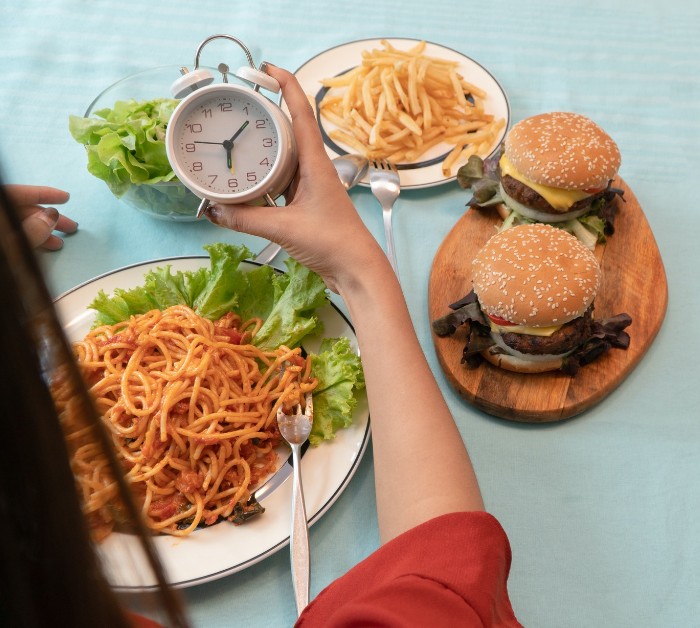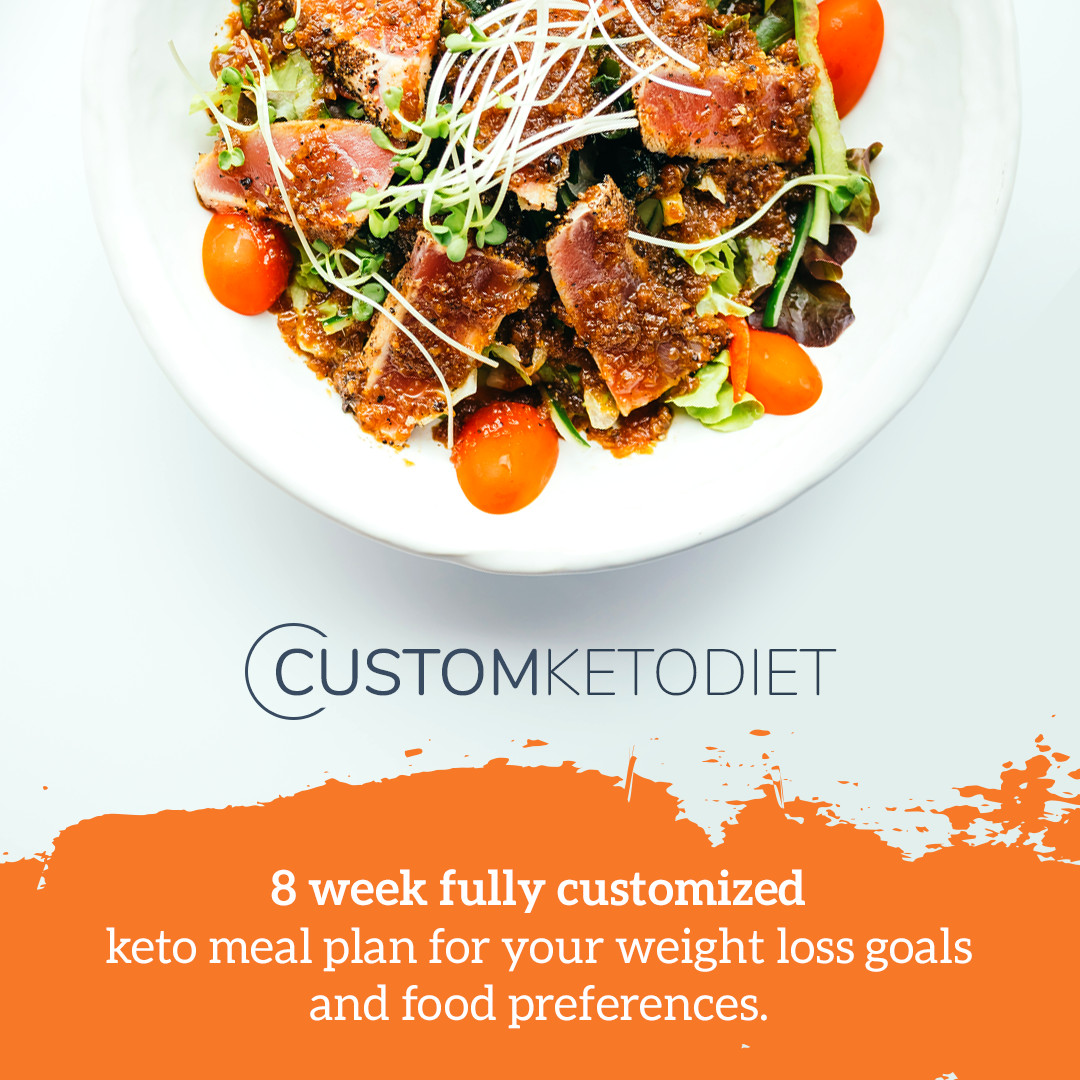How to start, what to eat, and what to expect from the Warrior Diet
The Warrior Diet – eating pattern based on intermittent fasting principles. An extreme intermittent fasting type that claims to follow the eating model of ancient warriors.
A diet that showed great results when it comes to weight loss, but hard to follow, not suitable, and not necessary for everyone.
Here in this article, we will show you what is it and what to expect from the Warrior Diet. After reading all the pieces of information you can decide if this is the right diet for you!
This post may contain affiliate links, which means we may receive a small commission, at no cost to you, if you make a purchase through a link. For more information, please see our disclosure.
What is the Warrior Diet?
Created in 2001 by Ori Hofmekler, a former member of the Israeli Special Forces, the Warrior Diet is a diet based on intermittent fasting.
The diet initially revolved around very small “underfeeding” meals of dairy, eggs, fruits, and vegetables for 20 hours of the day and a 4-hour “overfeeding” window.
This is an early version of intermittent fasting and is designed to mimic ancient warriors’ lifestyle of training and battling throughout the day and consuming a majority of their calories during the evening in one massive feast.
According to its creator, the Warrior Diet is designed to “improve the way we eat, feel, perform and look” by stressing the body through reduced food intake, which triggers “survival instincts”.
We must mention that the author himself acknowledges that this diet is based on his own beliefs and observations – not strictly on science.
Summing-up
The Warrior Diet is a 20-hour fast, and it is one of the oldest methods of fasting. After 20-hours you have a 4-hour window during which you can eat most things that you want.
How does it work?
This intermittent fasting method named the Warrior Diet is also sometimes referred to simply as the 20:4 diet or 20/4 fasting.
This might sound similar to the popular diet known as 16/8 intermittent fasting (you fast for 16 hours a day and eat during an 8-hour window). But there is a big difference between these two fasting types.
First, it’s much easier to fit your daily calorie needs into 8 hours instead of 4, and in the Warrior Diet, you fast during the whole day which is much more challenging than fasting overnight, like you would with the 16/8 diet.
How to follow the Warrior Diet
Before you start with the Warrior diet you will need to prepare more than just a meal plan. Anyone who wants to start with this eating pattern should follow an initial three-week, three-phase plan that will help your body adjust to the changes you are making.
Here are the warrior diet rules that you must follow before start fasting:
Week one ( Phase one) – “Detox”
This first phase aims to improve the body’s capacity to remove toxins and helps the liver to neutralize substances that trigger the fat gain.
Start by reducing the amount of food you eat during the 20-hour period that will be your fast time. Try to eat less every day and restrict your food intake to raw fruits and vegetables, vegetable juices, dairy (cottage cheese, yogurt), hard-boiled eggs.
During the four-hour eating window, you can start overeating to get all the calories that you’ve missed during the day. But try to stick to healthier choices.
You can eat a salad with oil and vinegar dressing followed by one large meal of plant proteins, wheat-free whole grains, and cooked vegetables. You can also eat lean meats and fish. It’s your choice but try to stick to healthier food choices.
You can drink water, tea, coffee ( without sugar and low in cream ), and some milk throughout the day.
Example daytime lunch: Clear broth soup, mixed salad with minimal olive oil and vinegar dressing, and a hard-boiled egg.
Example daytime snacks: Parsley, beet, carrot, and celery juice or cottage cheese with fruit.
For dinner, in your 4-hour window, you can overeat. You should eat the first serving of food and then take a 20-minute break.
The break allows a person to respond to their’s body satiety signals indicating they are full. If you’re still hungry then you can eat more of the same food.
Week two (Phase two) – “Fat Intake”
The second phase aims to improve the body’s ability to utilize fat for energy.
- Continue undereating for 20 hours per day, and eat same as the week one, foods listed above in phase one.
- During your 4-hour eating window eat the same foods mentioned in phase one, you should also add nuts.
- Don’t eat grains or starches during this phase.
Week three (Phase three) – “Adaptation to carbohydrate fuel”
This phase aims to improve the body’s ability to utilize carbs for energy. This phase will focus on alternating your meals, you will have 1-2 days high in carbs, followed by 1-2 days high in protein but low in carbs, and then rinse and repeat.
- 1-2 day high in carbs
- 1-2 days high in protein low in carbs
- 1-2 days high in carbs
- 1-2 days high in protein low in carbs
On high carbs days – follow the regular undereating schedule. During your eating window beside the foods you were consuming during week two, eat one main carbohydrate. Pasta, oats, potatoes, or anything else you like.
On high-protein low-carb days – undereat as normal. When you start with eating, eat a salad with oil and vinegar, and then up to 450 grams of animal protein and non-starchy vegetables. Grains or starches should not be consumed during the phase 3 overeating window, a small amount of fresh tropical fruit can be eaten for dessert.
After the initial three weeks
The creator of this diet recommends that once the dieters have completed the initial 3 phases, they should either repeat the phases all over again or stick to the third phase.
You should prioritize eating as little as possible during the 20-hour window, and overeating during the 4-hour window. Note that the serving sizes on the Warrior Diet are vague and there is no set calorie restriction.
As you get used to the diet incorporate exercise, including strength and speed training, into your routine to promote fat loss, and don’t forget to hydrate with plenty of water during the whole day.
The creator of this diet in his book “The Warrior Diet: Switch on Your Biological Powerhouse For High Energy, Explosive Strength, and a Leaner, Harder Body” – explains how to get started on the plan and maintain it for the long term.
What foods can you eat on the Warrior Diet and what you should avoid?

During the fasting window of 20-hours Hofmekler, the creator of this 20/4 eating protocol suggests sustaining yourself on small portions of dairy, hard-boiled eggs, and raw produce.
You can also consume zero or low-calorie beverages like water, coffee, or tea. Also, it’s good to consume a few servings of vegetables and fruits throughout the day to ensure you’re getting enough essential minerals and vitamins.
When it comes to your 4-hour for overeating, there are no restrictions. Technically you can eat whatever you want but it’s recommended to consume healthy nutrient-dense foods.
Foods to eat during the undereating phase ( in small portions )
- Raw vegetables: Greens, carrots, peppers, mushrooms, onions, etc.
- Fruits: Kiwi, mango, bananas, apples, pineapple, etc.
- Broth: Chicken, beef, etc.
- Dairy: Yogurt, milk, cottage cheese.
- Protein: hard-boiled eggs.
- Condiments: Small amounts of olive oil, apple cider vinegar.
- Beverages: Water, coffee, tea.
Foods to eat during the overeating phase
- Proteins: Steak, chicken, fish, turkey, eggs, etc.
- Starches: Corn, potatoes, beans, etc.
- Cooked vegetables: Greens, zucchini, cauliflower, brussels sprouts, etc.
- Grains: Quinoa, pasta, oats, barley, etc.
- Fats: Nuts, olive oil.
- Dairy: Milk, cheese, yogurt.
Foods to avoid
Cookies and cakes, candy, fast food, fried foods, processed meats, refined carbohydrates, artificial sweeteners, sweetened drinks.
Is the Warrior Diet effective for weight loss?

In general intermittent fasting is a good way to lose weight. The 20/4 is one of many intermittent fasting methods. The Warrior Diet does not have any research to back up its exact methods, but intermittent fasting does. Different methods of intermittent fasting, including 20-hour fasting cycles, have been linked to weight loss.
A controlled trial published in The American Journal of Clinical Nutrition that mimicked the Warrior Diet (fasting for 20 hours) found that people who reduced meal frequency without caloric restriction or eating over four hours in the evening experienced more weight loss than those who consumed the same amount of calories in meals throughout a day.
Also, those who ate one meal per day showed significantly reduced fat mass and greater muscle mass.
To find out more about the effects on your body of eating one meal daily visit this article – The OMAD Diet: Can Eating One Meal Per Day Be Healthy?
The same study found that participants following the Warrior Diet lost between 3 and 5 pounds of body fat over eight weeks and gained more muscle. But, they also experienced an increase in blood pressure and LDL cholesterol, which increases the risk of heart disease.
When you only have a 4-hour eating window, your body spends the other 20 hours to get rid of excess fat.
Fasting for 20-hours results in more weight loss because your body does not keep on storing energy but starts using the reserves during the fasting hours which results in losing extra pounds.
Keep in mind that some people following this eating pattern could consume too many calories during the 4-hour overeating window and experience weight gain.
That’s why it is important to follow the Warrior Diet meal plan foods that you should eat and avoid presented up here in this article.
How long after starting a diet will you see results?
If you follow the Warrior Diet and stick to the extreme rules of this fasting method you should experience rapid weight loss particularly in the first 2-4 weeks.
Potential side effects of the Warrior Diet
Because this is an extreme type of fasting it may lead to potentially dangerous side effects such as:
- Low energy
- Fatigue
- Dizziness
- Extreme hunger
- Insomnia
- Irritability
- Low blood sugar
If you find that your dieting is having a strong negative impact on how you feel, consult your doctor before you continue with your Warrior Diet meal plan.
The Warrior Diet is not recommended for the following group of people
The 20/4 extreme fasting type is not for everyone. This type of intermittent fasting is inappropriate for many people including:
- People with eating disorders
- Extreme athletes
- People with disease
- Children
- Women who are pregnant or nursing
- People who are underweight
It’s not easy to stick to
One of the hardest things to do if you decide to follow this diet is to stick to just a four-hour eating period and just at night. This can be very difficult esspecially if you you’re participating in normal social activities like going out for lunch or dinner.
While some people will have no problem consuming small amounts of calories during a 20-hour fast period, others may find this type of fasting very very difficult to follow.
Summing-Up
The Warrior Diet can be difficult to follow especially if you never fasted before. This is a highly restrictive and unnecessary diet for most people. It may also lead to potentially dangerous side effects like irritability, fatigue, and fainting.
Is the Warrior Diet the right choice for you?
People who tried this eating pattern claim that is effective and can help you to shed fat. But this is a very extreme type of fasting and it is not recommended by nutrition experts. Even the author of this diet says that this type of eating is not based on evidence and scientific research.
This way of eating is not appropriate for many people. If you’ve never fasted before there are other more appropriate intermittent fasting methods that you can try like:
16/8 intermittent fasting – where your fasting period will be 16 hours (included sleeping time) and you’ll have an 8-hour eating window. A shorter fasting window can be easier for beginners to manage hunger and cravings.
The 5:2 diet – you consume 500-600 calories two days a week and you eat normally for the remaining 5 days.
Eat-Stop-Eat – An entire 24 hour fast. A popular form of fasting where you fast for 24 hours once or twice a week. Here is an article where you can find out more about this eating pattern: Eat Stop Eat Diet | How It Works And Should You Try It For Weight Loss.
Alternate-day fasting – The basic idea is that you fast on one day and then you eat what you want the next day.
These are different types of intermittent fasting and compared to a Warrior Diet some of them are easier to start and practicing like 16/8 intermittent fasting or the 5:2 diet.
They all have different benefits and downsides. It’s up to you which one to choose, depending on your body type. Keep in mind, always consult with your doctor or dietitian before making any changes in your diet.
FAQ
Q: What can you drink on the Warrior Diet?
A: Try to drink more water during the whole day, staying hydrated is essential. The best way to know if you’re adequately hydrated is by looking at your urine color – if it’s yellow it means it’s time to drink more water.
You can also drink zero-calorie beverages during your fasting periods like black coffee or herbal tea. Avoid alcohol, sugary drinks, diet soda, and other beverages that contain chemicals.
Q: How long should you follow the Warrior Diet?
A: To get good results you should follow the Warrior Diet for a month. By the time you complete a month on this diet intermittent fasting will become a habit.
Q: What are the results of the Warrior Diet?
A: When you’re on the Warrior Diet you will feel light and energetic. Initially, it will be tough to control your anger and stick to the diet plan.
By the end of the third day, you will lose a lot of water weight. You will feel less bloated and more active. This is all good but be sure to check up here the side effects of this diet too.
Q: Does the Warrior Diet slows down your metabolism?
A: There isn’t evidence that intermittent fasting slows down your metabolism. Instead, it helps revamp the metabolic system and clear off toxins to keep you active and healthy.

The Warrior Diet final thoughts
The Warrior Diet is a type of intermittent fasting that can help you shed some pounds quickly. There is little evidence that supports this eating pattern and its creator also says that this diet is not based on scientific research.
This diet is also not suitable and safe for a certain group of people and it’s hard to follow especially if you’ve never fasted before.
As we mentioned before there are other types of intermittent fasting that are easier to follow and give great results for weight loss and improving health. If you decide to start with the Warrior Diet consult with your doctor or dietitian first.




